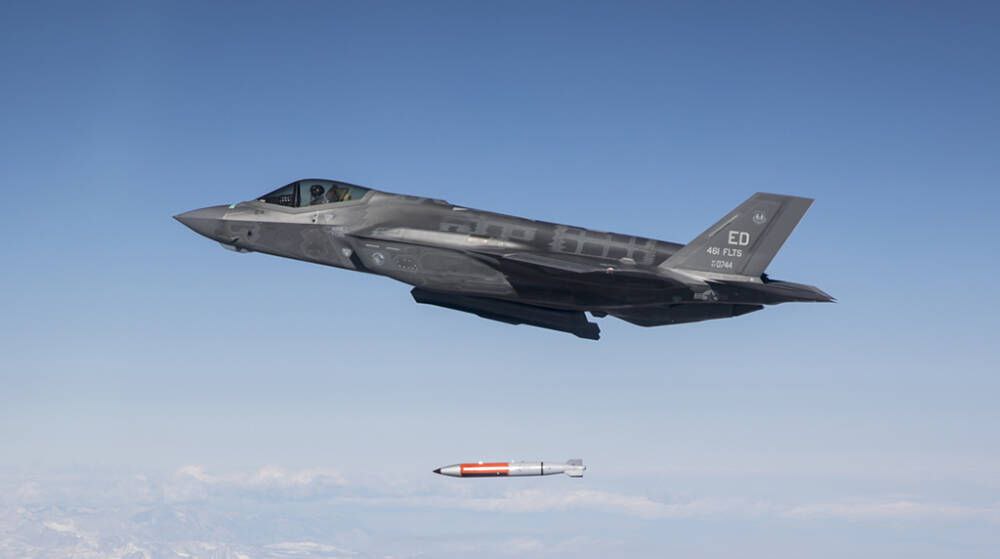Netherlands’ F-35 stealth fighters assume nuclear deterrence role within NATO
The Netherlands Takes the Next Step in F-16 to F-35 Transition, Assuming NATO Nuclear Deterrence Role. Effective June 1, the F-35 will completely take over the Dutch role of nuclear deterrence within NATO, replacing the F-16. This makes the Netherlands the first European country to transition to the F-35 for nuclear strike missions, according to Defense Minister Kajsa Ollongren‘s statement to the House of Representatives.
Key takeaways:
- As of June 1, the F-35 will completely take over the Dutch role of nuclear deterrence within NATO.
- The Netherlands is the first European country to transition to the F-35 for nuclear strike missions.
- Volkel Air Base will be the home of one of the F-35 squadrons responsible for carrying out nuclear strike missions.
De volgende stap in de transitie van de F-16 naar de F-35 is gezet. Vanaf 1 juni neemt het geavanceerde gevechtsvliegtuig de Nederlandse kernwapentaak binnen de NAVO volledig over van de F-16.
Lees meer ???? https://t.co/kYbrrj99Mf pic.twitter.com/qm6XWGcTqe
— Koninklijke Luchtmacht (@Kon_Luchtmacht) May 30, 2024
The transition from the F-16 to the F-35 for NATO’s nuclear deterrence mission began some time ago. An extensive testing and certification process of the F-35 for the nuclear delivery mission, in this case, the B61-12 freefall thermonuclear bomb, has been carried out in recent years.
See also: F-35 now certified to carry tactical nuclear bombs
Volkel Air Base is the home of the so-called «dual-capable» combat aircraft, and just like the F-16s they replace, it will be the base of one of the F-35 squadrons responsible for carrying out nuclear strike missions.
Where are US nuclear bombs in Europe?
The presence of US nuclear bombs in Europe dates back to the Cold War, as part of NATO’s nuclear deterrence strategy against the Soviet Union. After the Cold War, the number of nuclear weapons in Europe was significantly reduced, but there are still approximately 100 to 150 nuclear warheads stored at air bases in five European countries:
- Belgium: Kleine Brogel Air Base
- Germany: Büchel Air Base
- Italy: Aviano Air Base and Ghedi Torre Base Air Base
- Netherlands: Volkel Air Base
- Turkey: Incirlik Air Base
Poland is another country that has offered to store this type of US nuclear weapons in order to deter potential Russian aggression.
Its low radar signature (in combination with the B-61-12 bomb) makes the F-35 a great asset for nuclear deterrence.
These nuclear weapons are under the exclusive control of the United States and cannot be used by the countries where they are stored without prior authorization from Washington.
The Dutch Ministry of Defense assures that NATO’s nuclear deterrence is essential for the security of the alliance, as well as for the country’s own security. The fundamental purpose of NATO’s nuclear capability is to preserve peace, prevent coercion, and deter aggression.

/https://aviacionlinecdn.eleco.com.ar/media/2024/05/F-35-disuacion-nuclear.jpg)

Para comentar, debés estar registradoPor favor, iniciá sesión